Nature is full of wonders, and some creatures have evolved in ways that seem almost alien.
One of the most fascinating features that certain animals possess is the number of eyes they have. While humans and many animals are familiar with the standard two eyes, there are a variety of species in the animal kingdom that have more than two eyes. In this article, we will explore six such animals, their unique adaptations, and how they use multiple eyes for survival.
1. Spiders
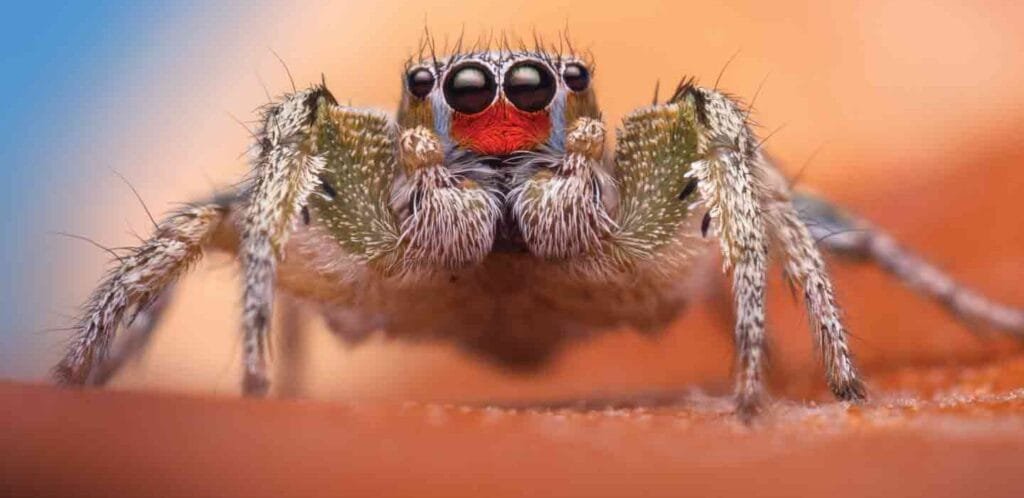
Spiders, belonging to the arachnid family, are one of the most well-known creatures with more than two eyes. Most species of spiders have eight eyes, although some may have fewer. The arrangement and functionality of their eyes vary depending on the species.
Eye Structure and Function:
Spiders typically have four pairs of eyes arranged in different patterns. The central pair of eyes is often the largest and is responsible for detecting motion, while the other pairs help with detecting light and forming images. Some spiders, like jumping spiders, have very keen vision and can even focus their eyes on a target to judge distance accurately, which is crucial for hunting prey. Other spiders, like those that live in caves or deep underwater, may have reduced vision or may even be blind due to the lack of light in their environment.
How Multiple Eyes Help:
The many eyes give spiders a greater field of vision, making them effective hunters, especially for those that need to spot small movements from a distance. The arrangement of the eyes also helps them detect changes in light levels, which is essential for navigating their surroundings and avoiding predators.
2. Horseshoe Crabs

Horseshoe crabs, despite their name, are not true crabs at all. They are ancient creatures that have been around for over 450 million years. These fascinating animals have a total of 10 eyes spread across their body, a feature that sets them apart from most other marine life forms.
Eye Structure and Function:
Horseshoe crabs have a combination of simple and compound eyes. They possess two large compound eyes located on the sides of their carapace (the hard shell), which are excellent for detecting movement. Additionally, they have several smaller, simple eyes located on the top of their shell and along their tail spine. These eyes are sensitive to light, helping the horseshoe crab navigate its environment and detect predators, even in low-light conditions.
How Multiple Eyes Help:
The horseshoe crab’s multiple eyes give it an advantage when it comes to sensing its surroundings. The simple eyes on its back help detect light levels, while the compound eyes give a broader view of its environment. This allows the horseshoe crab to be aware of predators from multiple angles and gives it the ability to make quick, sharp movements to escape danger.
3. Octopuses
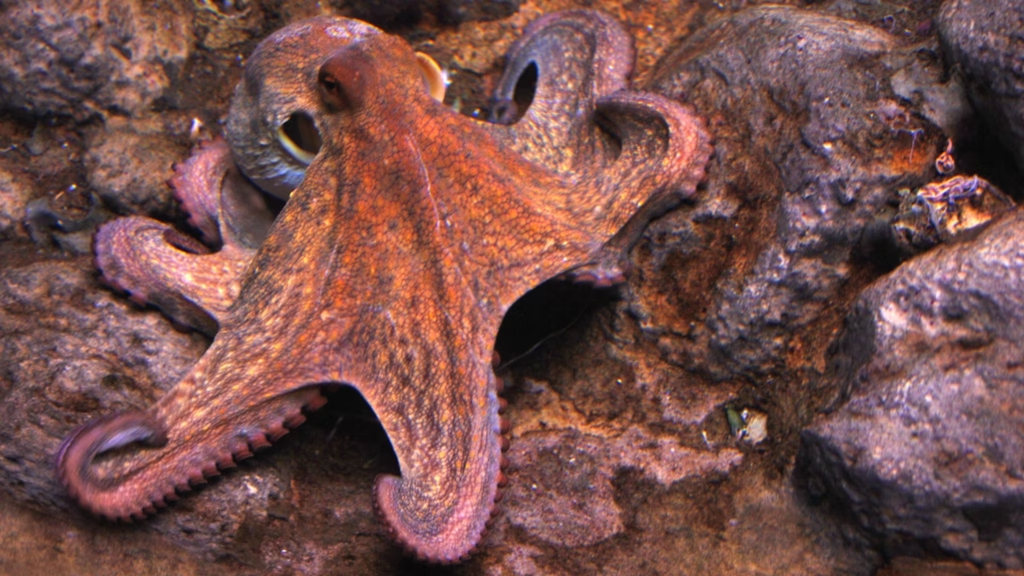
Octopuses are some of the most intelligent and mysterious creatures in the ocean. Known for their problem-solving skills, camouflage abilities, and remarkable dexterity, octopuses are also unique in their eye structure. They possess two eyes, like most animals, but their eyes have evolved in some very interesting ways.
Eye Structure and Function:
Octopuses have two large, well-developed eyes that are capable of seeing very clearly underwater. However, unlike many other animals, an octopus’s eyes are capable of detecting polarized light. This ability allows them to see contrasts and patterns that would be invisible to most other animals. While they technically only have two eyes, the depth of vision they experience is far beyond that of many creatures.
How Multiple Eyes Help:
The octopus’s eyes are crucial to its hunting and survival. Their advanced vision allows them to detect changes in light, patterns, and movement, which is especially useful when hunting for prey. The polarization of light also helps them detect prey hiding in coral or rocks, giving them an edge when hunting.
4. Mantis Shrimp
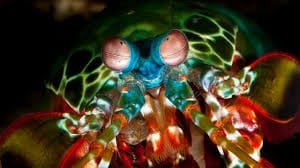
Mantis shrimp are among the most colorful and aggressive creatures in the ocean. Known for their powerful claws that can strike with the speed of a bullet, these crustaceans also possess one of the most complex and sophisticated visual systems found in nature. Mantis shrimp have 16 types of photoreceptor cells in their eyes, which is significantly more than humans, who only have three.
Eye Structure and Function:
Mantis shrimp eyes are divided into two parts, and they have the ability to move independently from each other. This means they can look in two different directions at the same time, providing them with a 360-degree view of their surroundings. Their eyes also have the ability to detect polarized light and ultraviolet light, giving them a very detailed view of their environment.
How Multiple Eyes Help:
The mantis shrimp’s advanced eyes allow it to detect a wide range of colors, including those that are invisible to humans. This is useful for communication, hunting, and navigating the complex environments in which they live. The ability to see polarized light also helps mantis shrimp identify prey and avoid predators, ensuring their survival in the often chaotic underwater world.
5. Scorpions
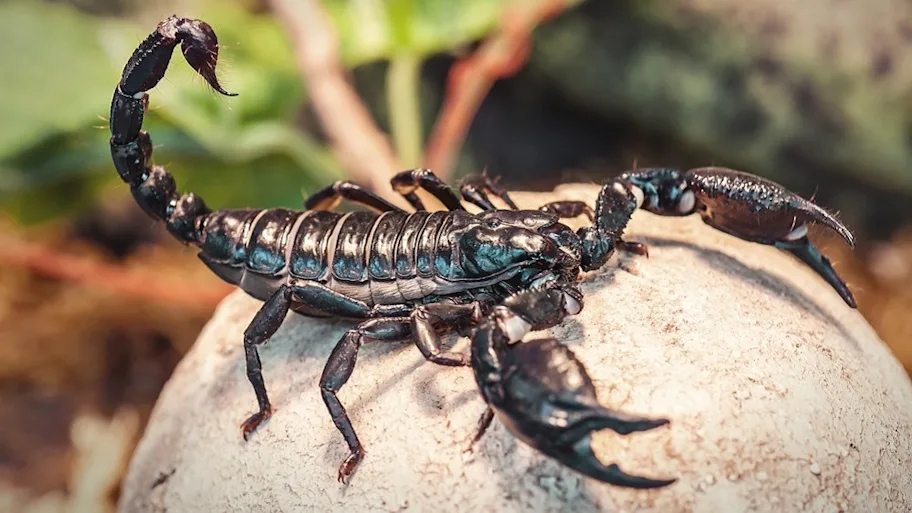
Scorpions, another member of the arachnid family, are known for their menacing appearance and their potent venom. Like spiders, scorpions also have multiple eyes, typically eight in total, arranged in various patterns on their body.
Eye Structure and Function:
Most scorpions have two large central eyes and six smaller eyes arranged around their body. These eyes are not used for seeing fine details but are more sensitive to light and motion. Scorpions are nocturnal creatures, and their eyes are adapted to see in low-light conditions, which is essential for their nighttime hunting habits.
How Multiple Eyes Help:
The multiple eyes help scorpions detect movement in the dark, an important trait for catching prey and avoiding predators. Their vision is particularly useful when they are hunting insects or other small animals. Additionally, scorpions rely on their sensitive eyes to avoid danger from larger predators, such as birds or mammals, especially during their nocturnal foraging.
6. Flatworms (Planarians)
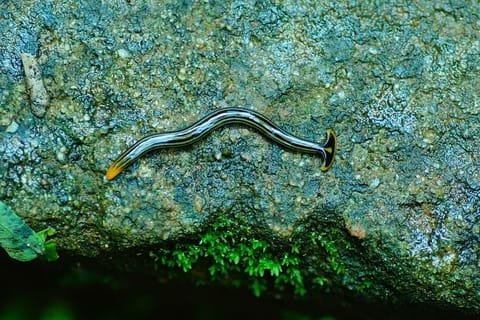
Flatworms, specifically planarians, are a type of simple aquatic animal that can be found in both freshwater and marine environments. These animals have two eyes, but what makes them particularly interesting is that they are capable of regenerating lost body parts, including their eyes.
Eye Structure and Function:
Planarians have simple eyes known as ocelli, which can only detect light and dark. While they don’t have complex vision like humans or other animals, their eyes are effective in helping them avoid bright light and seek out darker areas where they can find food and hide from predators. Despite having only two eyes, they can navigate their environment quite effectively by responding to changes in light.
How Multiple Eyes Help:
Although the planarian only has two eyes, these are still vital for their survival. The ability to detect light and dark allows them to find appropriate hiding places and avoid predators. In bright environments, they will quickly retreat to darker areas, where they feel safer. Their ability to regenerate lost eyes also ensures that they are always able to detect changes in their surroundings, increasing their chances of survival.
In the animal kingdom, having more than two eyes is an evolutionary trait that provides various advantages for survival. Whether it is for detecting light, avoiding predators, or enhancing hunting abilities, the presence of multiple eyes allows these animals to adapt to their environments in extraordinary ways. From the eight eyes of spiders and scorpions to the complex vision of the mantis shrimp, these creatures prove that nature’s creativity knows no bounds.
While humans only have two eyes, these animals remind us that there are many different ways to see the world. The diversity in eye structures and functions is just one of the countless examples of the fascinating adaptations animals have developed to thrive in their environments.

